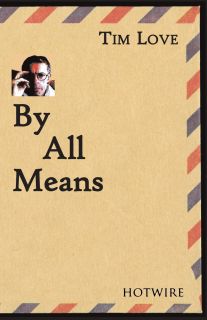In the past I've tried to compare map-making to writing poetry. In my poem The King it says
|
trying to preserve the angles, the shortest distances,
the areas, but he can't have them all or even any 2
|
alluding to the idea that map-makers have tried several ways to represent the globe on a flat surface much as poets try to flatten experiences. In Obscurity (published in Sol) and especially
New Pastorals - A Streetmap I went into more detail, pointing out that "Sometimes (as in maps of the Metro) connections may matter more than accurate distances and directions - they are spacialisations of time rather than depictions of space ... In tourist maps as in poems there's a balance between mimesis, knowledge and the formal requirements of the medium. Clarity of purpose doesn't imply stylistic monotony. Symbolism and Realism can be mixed, viewpoints can change (from plan to elevation, from absolute to personal), keys can be set up or recommended narratives and connections highlighted.". I ended the maps section rather grandly by writing "A poem is a map to assist in locating oneself in one's evolving world of language, as one slowly discovers a voice. Our poems increasingly have the gaudy colouring and po-mo stylistic variety of city maps."
My interest in this topic was rekindled on reading "Tears in the fence" (No 57 Summer 2013) where the ever-readable Andrew Duncan makes some worthwhile points about Fiona Sampson's Beyond the Lyric: A Map of Contemporary British Poetry
- The idea of a map involves shared space. It places poets in relation to each other and must select technical features to be the dimensions of the map - its north and south. This must be very provocative to poets - who like to see themselves as autonomous and perfect, even if they habitually place everyone else in a shared space. Location at one, any, single point must irritate people who see themselves as present over whole areas where that spot is not. Poets like to think of the world as something that fits inside their poems, rather than vice versa (p.112)
- Sampson's faithfulness to individual texts is like travelling by candlelight, a terrain of handkerchief-sized plots, snug in low visibility. This is the opposite of a map that puts local patches together in one set of uniform relations. (p.114-5)
Today I found "Language is not a vague province": Mapping and Twentieth-Century American Poetry, a fine dissertation by Alba Rebecca Newmann which goes much further than I ever could. She points out that
- Within literary criticism, the seductions of the terms associated with cartography — map, mapping, itinerary, travelogue, guide, discovery, exploration, power, representation — are palpable. ... Unfortunately, well-versed as we are with simile, analogy, and metaphor, it is almost too easy for literary critics and scholars to say "This maps X onto Y," or "This text is a map of that culture or that experience." The limitation of much of this literary scholarship is its failure to investigate how maps themselves operate — not only what they describe, but how they establish relationships and organize knowledge
- there are three cartographic ways of asserting authority or structuring knowledge that are particularly significant to the interdisciplinary study of maps and poems. These are: (1) maps articulate boundaries; (2) they delineate paths; and (3) they establish relationships.
- it is poetry’s ability to reveal unexpected proximities, (or distances) —conceptual, etymological, visual, aural — that is most significant to our conversation about poetic condensation as a cartographic practice. In the relatively small space of the page, the juxtaposition of words, lines, and images creates a field of associations.
- Understanding maps as artifacts, as rhetorical objects embedded in culture, does not allow our analysis of them to stop with a reading of their details or declarations. So, too, with poems. Once we have concentrated on what is on the page, we then must turn to talking about what is not on the page, and why: what circumstances, cultural or otherwise, may have contributed to the production of this utterance.
In her poetry classes she sometimes hands out maps for evaluation before giving the class poems. I hadn't thought of doing that. Sounds like fun.
 Over 60 people including Pauline Stainer were at the launch of "Giotto's Circle" by Diana Brodie. There were readings by Diana, family and friends. Huguette Chatterton sang some French songs.
Over 60 people including Pauline Stainer were at the launch of "Giotto's Circle" by Diana Brodie. There were readings by Diana, family and friends. Huguette Chatterton sang some French songs.  My story collection "By All Means" (ISBN 978-0-9570984-9-7), published by Nine Arches Press, is on sale from
My story collection "By All Means" (ISBN 978-0-9570984-9-7), published by Nine Arches Press, is on sale from  My poetry pamphlet "Moving Parts" (ISBN 978-1-905939-59-6) is out now, on sale at the
My poetry pamphlet "Moving Parts" (ISBN 978-1-905939-59-6) is out now, on sale at the 